The Sun is the central star of the Solar System, its most massive object, a source of almost inexhaustible energy, an average star compared to other stars. These are the basics of what we know about it now. But the path to this knowledge began with beliefs in the magical nature of the Sun. It is not at all surprising that it was the central (or close to such) deity among almost all peoples of the world. However, this belief did not prevent us from scrutinizing our luminary. The first observations concerned the movement of the Sun across the sky and its eclipses.

Sun spots
Real astrophysical studies of the nature of the Sun began only in 1610, when Galileo Galilei created his telescope to look at the heavenly bodies. He noticed dark areas on the sun’s surface that we now call spots. There is evidence that the ancient Babylonians and Chinese were also aware of these spots. But in those days, all studies were conducted with the naked eye and were not regular. The invention of the telescope changed the state of things, so the first half of the 17th century is considered the beginning of the era of observing the Sun. Astronomers have noticed that the spots are moving. At first they were thought to be planets inside the orbit of Mercury, but Galileo proved that these are formations on the surface of the luminary, that is, it also rotates around its own axis.
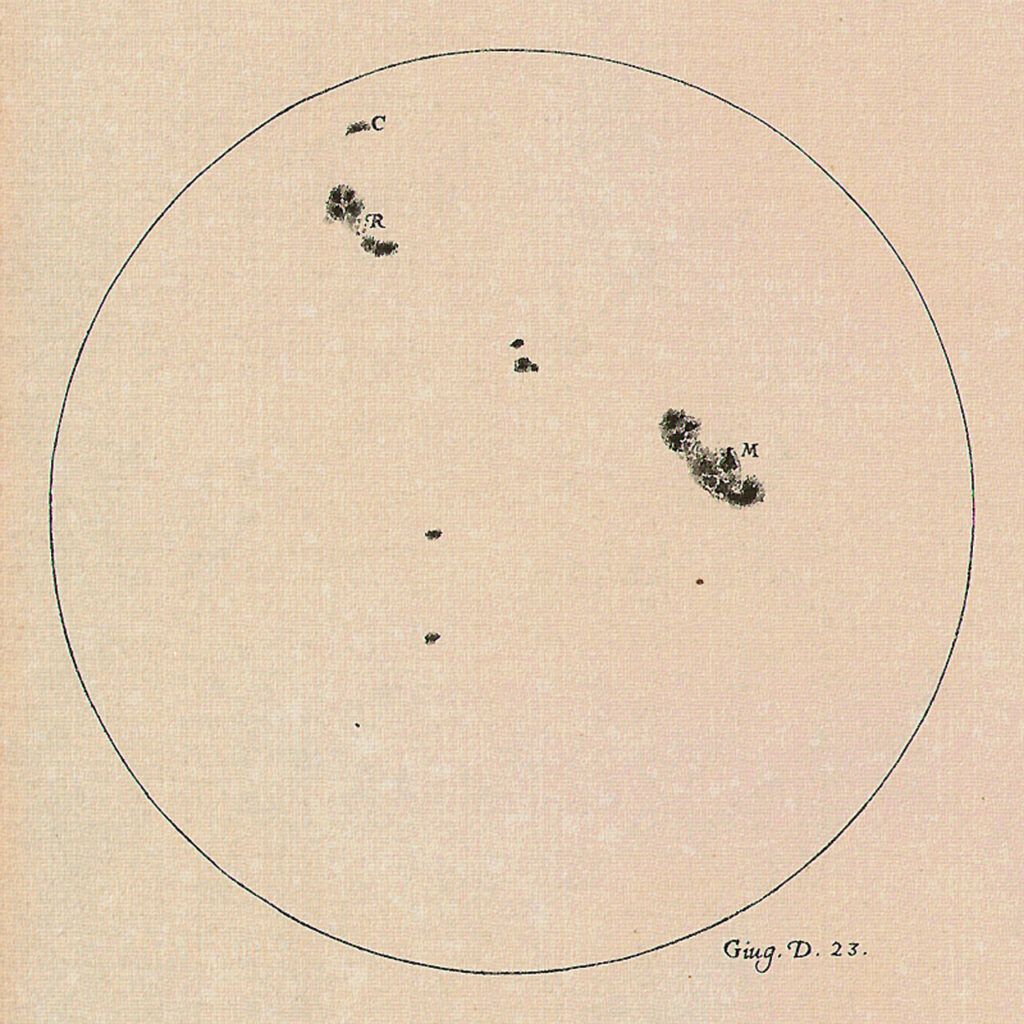
At the end of the 19th century, Edward and Annie Maunder published a work with reference to Gustav Spörer about the survey of the number of sunspots and noted that in the second half of the 17th century they were almost absent. The reason for this turned out to be not undue observations, but the real absence of spots on the Sun. At the same time, scientists noted that the number of aurora borealis also decreased at such periods and the solar corona was dim during eclipses. This led to the assumption that our luminary really influences the Earth, which is manifested in the frequency of auroras depending on the number of spots on the Sun. This period of time was called the “Maunder minimum”. There are also attempts to link Sun’s acivity to climate change on Earth. During the 17th century, a decrease in temperature was observed, called the “Little Ice Age”. Although the two above-mentioned events overlapped in time, the Little Ice Age began long before the disappearance of sunspots, so the connection between their number and climate change is rather doubtful.
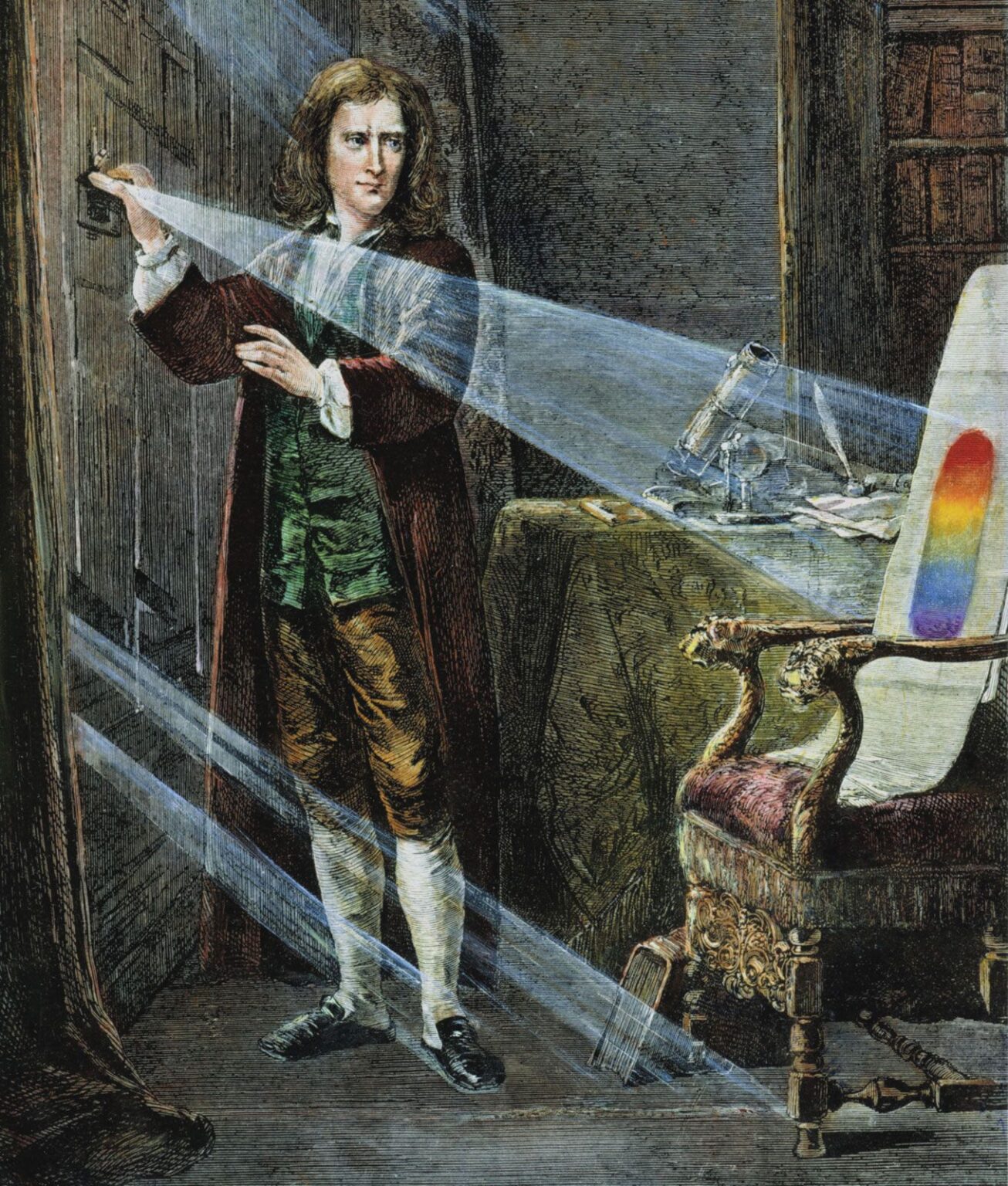
In 1666 Isaac Newton let a beam of sunlight through a glass prism, dividing it into a spectrum and so demonstrating that white light consists of different colors. Thus, he laid a new direction in observing the Sun — spectroscopy. This direction began to bear fruit as early as the beginning of the 19th century. In the 1800s, Sir William Herschel tested new light filters that were supposed to pass only red light for observing sunspots. But he noticed a strange phenomenon: heat was felt behind the filter. After passing light through a prism and placing thermometers on different colors and one aside the red zone (where the eye no longer saw any colors), he was amazed at the result: the “off-color” thermometer showed the highest temperature. Thus, the scientist came to the conclusion that, in addition to visible light, there is also an invisible part of the spectrum. The following year, Johann Wilhelm Ritter discovered that there is also an invisible radiation from the opposite — violet — end of the spectrum, which can be registered due to its action on silver compounds. These invisible parts of sunlight are called “thermal” and “chemical” rays. They are now known to us as infrared and ultraviolet rays.
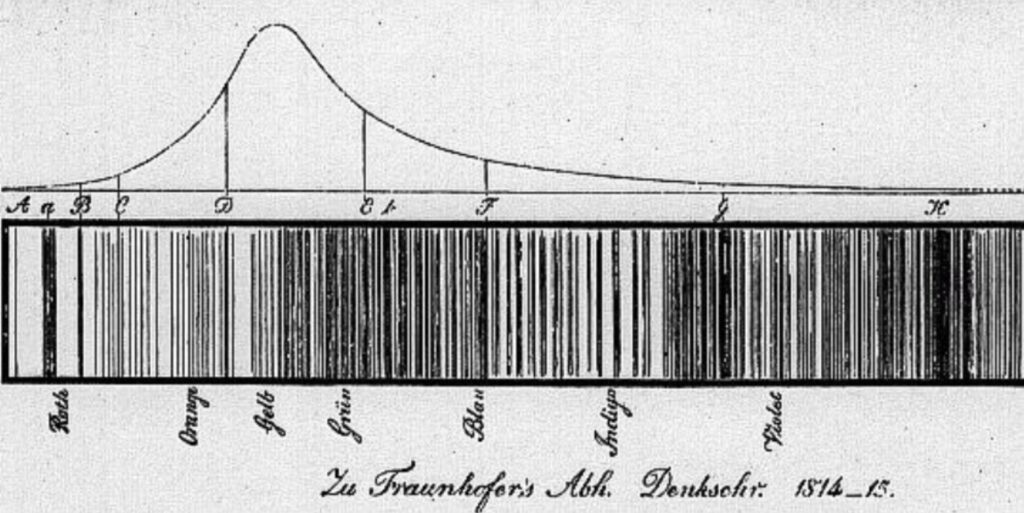
In 1802, William Wollaston decomposed sunlight into a spectrum and noticed dark lines there. He assumed that the reason for their occurrence is the imperfection of the prism іщ did not pay attention to them. As early as 1814, Joseph Fraunhofer observed dark lines in the spectra of the Sun and other stars, and some of them coincided, and some of them were in different places of spectra for different objects. At first, he assumed that these lines arise in the atmosphere, but in this case they should all be in the same place. Therefore, their nature was related to some processes on the stars. As early as 1859, Gustav Kirchhoff discovered a connection between spectroscopic lines and chemical elements. Due to this phenomenon, astronomers began to discover new chemical elements, first on the Sun, then on Earth. Like, for example, helium, found in 1868 in the solar corona by Pierre Janssen and Norman Lockyer. (The latter, by the way, is the founder of the Nature journal.) A year later, a bright line of an unknown element was discovered in the spectrum of the Sun and was named coronium.
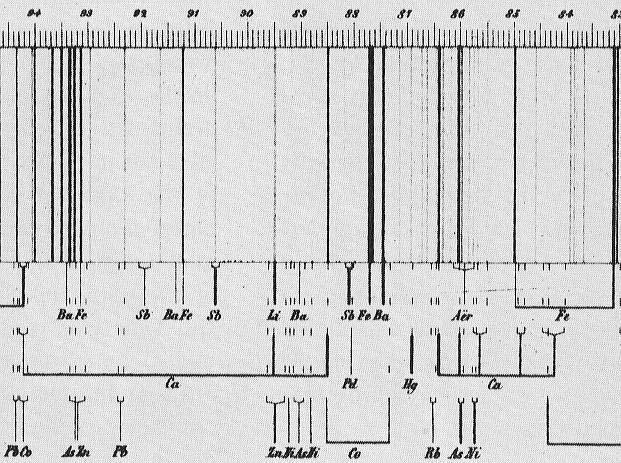
But let’s go back to the spots. In 1843, Heinrich Schwabe published a work in which he noted periodic changes in the number of spots on the Sun. According to his observations, this period was 10 years (in fact, cycles of solar activity vary from 7.5 to 11 years). Rudolf Wolf, director of the Bern Observatory, became interested in Schwabe’s work. He began to collect data from past observations, follow sunspots and invented a method of their calculation, which was later called “Wolf numbers”. In 1852, he, together with Edward Sabine, Jean-Alfred Gautier and Johann von Lamont independently discovered the connection between sunspots and the Earth’s magnetic field. In 1848, Joseph Henri determined that the temperature in the spots is lower than on the surface of the Sun around them.
Magnetic storms
On September 1, 1859, British astronomy enthusiasts Richard Carrington and Roger Hodgson had an opportunity to observe a strange phenomenon. A bright flash appeared between the spots on the Sun, which disappeared in as little as 5 minutes. That evening, the Kew Observatory recorded strong changes in the Earth’s magnetic field. After that, bright auroras began to appear all over the planet, and the worldwide telegraph network worked with failures. Most of the telegraph stations burned down. Some telegraph operators were showered with sparks, others calmly listened to the signal… with the telegraph disconnected from the power supply. In the end, there was a coronal ejection of matter from the Sun, which was observed by gentlemen Carrington and Hodgson. The chain of these phenomena was called the “Carrington event”. It is worth noting that in 2013, experts from the Lloyd’s insurance company estimated the losses from this incident for the US alone at 0.6 to 2.6 trillion dollars. It is possible that such powerful phenomena have occurred on Earth before, but the Carrington event was the first to be documented. In 2012, the Sun experienced a coronal ejection of matter that could have caused a magnetic storm on Earth close to the Carrington storm, but it bypassed our planet. A fairly powerful magnetic storm in March 1989 caused power outages in the Canadian province of Quebec.
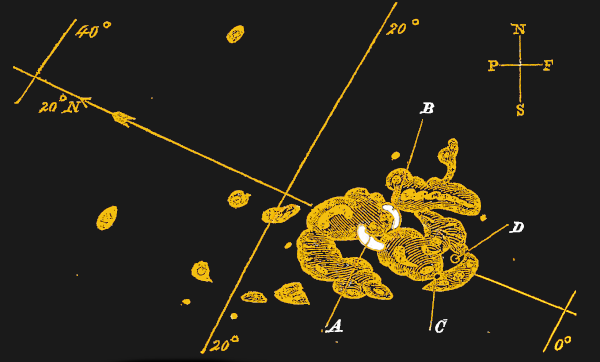
A magnetic storm is just a disturbance in the magnetic field of our planet. It can be caused by a strong flow of charged particles from the Sun (coronary ejection of matter) or changes in the solar magnetic field. This phenomenon is more dangerous for objects in space than on Earth. Artificial satellites are the most vulnerable. Powerful flares or ejections of matter on the Sun can destroy electronics. Less noticeable is the effect on orbital motion, but it should not be ignored either.
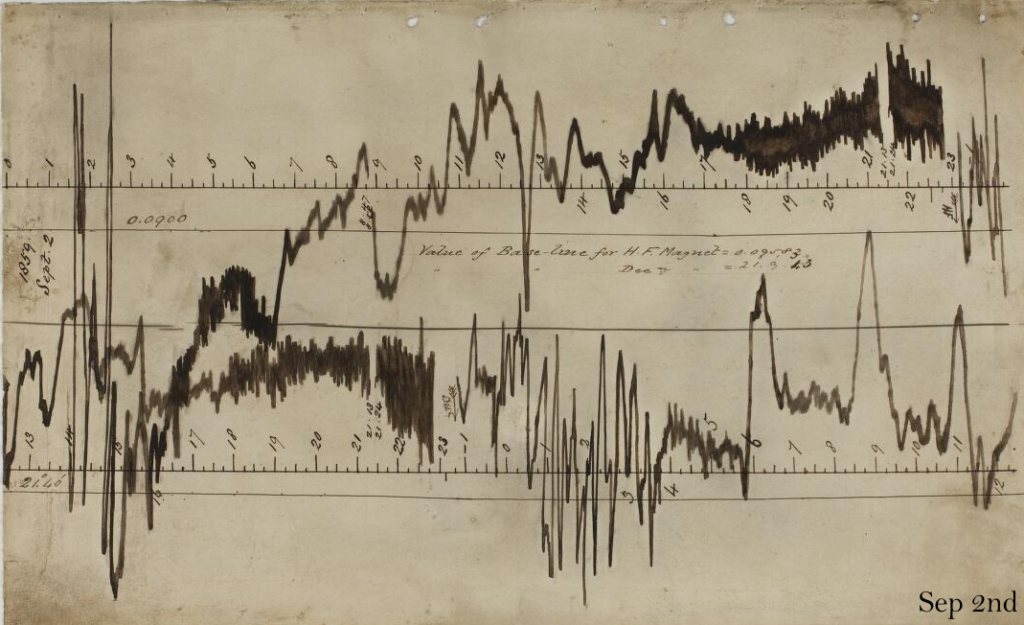
The “magnetization” of sunspots was proved by George Hale in 1908 using the Zeeman effect: spectral lines split in a magnetic field. He also discovered that after one 11-year cycle, the polarity of the spots in the northern and southern hemispheres of the luminary changes to the opposite. After that, there were still attempts to find the magnetic field on the Sun, but they were unsuccessful: it is much weaker over its “normal” surface than over the spots. It was only in the 50s that Horace and Harold Babcock managed to do this using the latest equipment. And in 1961, they published an explanation of the formation of spots and changes in the polarity of the Sun’s magnetic field. According to them, at the beginning of the solar cycle, the magnetic lines are oriented parallel to the meridians (poloidal component). Due to the differential rotation of our luminary, the plasma is twisted together with the magnetic lines, they become parallel to the equator (the toroidal component increases). When the tension of the magnetic field lines increases, some of them begin to reach the surface of the photosphere. Sunspots are formed in the places of their exit and entrance. Over time, the lines are twisted and rewired so that their orientation again becomes meridian, but with the opposite polarity to the previous cycle.
Solar corona
The solar corona has interested scientists since time immemorial, when they realized that it was part of the Sun, not the Moon. Its research began in the second half of the 19th century. At first, only spectroscopic observations were made and only during eclipses.
Since 1931, studies of the corona have become everyday thanks to the creation by Bernard Liot of a new type of telescope — a coronagraph capable of simulating eclipses using a small “artificial Moon” in the focal plane. Bengt Edlen together with Walter Grotrian discovered in 1939 that coronium is actually not an unknown element, but a highly ionized iron ion, which has only 13 electrons. It follows from this that the temperature in the solar corona is very high, since the atoms there are strongly ionized. According to approximate estimates, this temperature reaches at least one million kelvins. And the temperature of the photosphere, the surface of the Sun, is just below 6000 K.
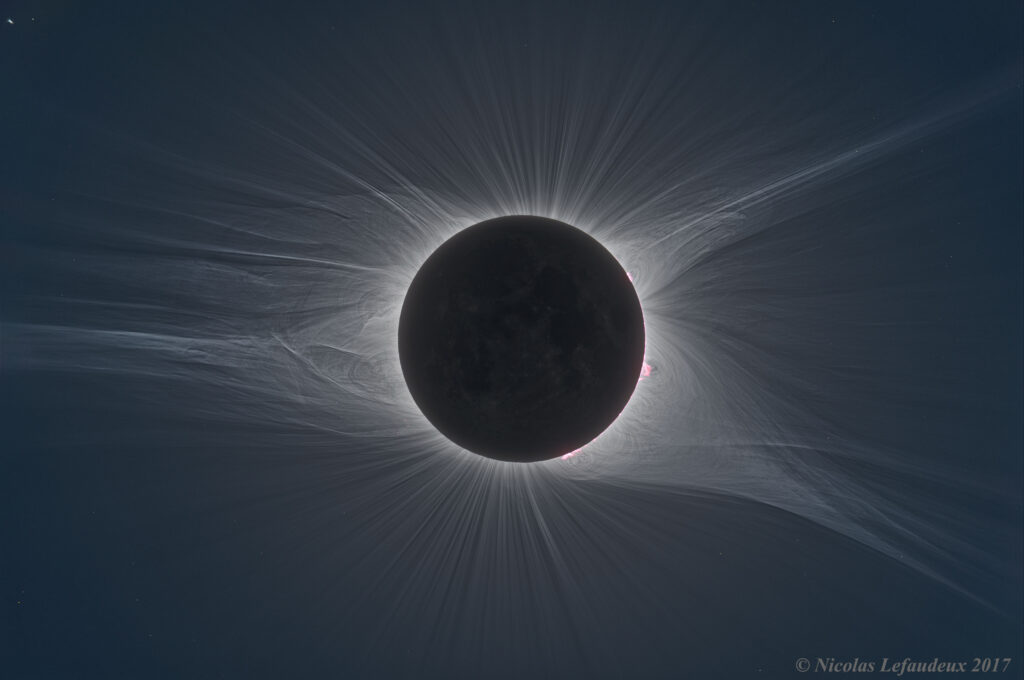
Taking into account the fact that the solar corona is a rather long object, reaching even the orbit of the Earth, the question arises “how have we not been fried yet?” An analogy with boiling water will help to answer it. Its temperature under normal atmospheric conditions is 100°C, and the temperature of water vapor is always higher than 100 degrees (otherwise the vapor condenses into water). We can hold our hand over boiling water for a certain amount of time, but not in boiling water, even though the steam is hotter. And the matter here is the mass of the substance that interacts with the hand. The concentration of water particles in boiling water is thousands of times greater than the concentration of water vapor in the air. Therefore, the heat exchange between the hand and the hot water is much faster than between the hand and the steam in the air.
The same is true in space: the concentration of particles in the corona near the Earth’s orbit is very low compared to the concentration of particles in the Sun’s photosphere, and even more so in the Earth’s atmosphere. Therefore, the “heat” from the crown is practically imperceptible.
A second question arises: what is the reason for such a high temperature in the corona? There is no unequivocal answer here. Today, the most popular hypotheses are wave heating and magnetic lines’ rewiring. The first one was proposed by Evri Schatzman in 1949. According to it, magnetoacoustic (longitudinal) and Alfvén waves (transverse, the direction of propagation of which coincides with the direction of the magnetic lines) are formed in the interior of the Sun, which transfer energy from the depths of the luminary to the surface — the photosphere — and are released in the form of heat, which heats the corona. These waves must be low-frequency — from millihertz to several hundred hertz. Data from the solar observatories SOHO (Solar and Heliospheric Observatory) and TRACE (Transition Region and Coronal Explorer) showed that waves of these frequencies are present in the Sun, but they are not enough for the existing heating, and the SDO (Solar Dynamic Observatory) satellite found such waves in individual places in the lower layers of the solar atmosphere, in regions of the calm Sun, in coronal holes and active regions. That is, they can occur everywhere, but at different intervals of time. But this is not enough to heat the entire corona.

On the other hand, there is rewiring of magnetic lines between small regions (50-1000 km) on the surface of the Sun, from which magnetic lines exit or enter. These regions change their position due to the constant convective mixing of the substance on the surface, causing rewiring, during which a micro- or nanoflash can occur, which causes heating.
Such events must occur on the Sun everywhere and constantly, but it is impossible to observe them directly. The same TRACE and SOHO saw slight increases in brightness in the ultraviolet, which they associated with these microflares, but they were not observed everywhere. This hypothesis was proposed by Eugene Parker.
The next stage in the study of the solar corona will be its close-up study using spacecraft. We will talk about this in the second part of our material.

